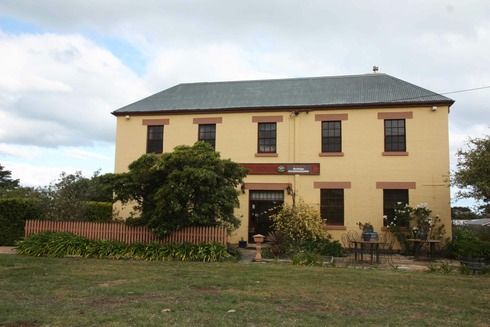The Freycinet Peninsula takes its name from French navigator Louis Claude de Saulces de Freycinet (7 August 1779 – 18 August 1841), a member of Nicolas Baudin’s expedition to explore the south and south-west coasts of Australia in the Naturaliste and Géographe. They were covering much of the same ground at around the same time as Matthew Flinders, but Baudin and Freycinet published their map of the Australian coastline in 1811, three years before Flinders published his version. Flinders, of course, had spent seven years imprisoned on the French Island of Mauritius.

With the Meredith family in place, along with the Amos brothers and the Talbot, Buxton and Cotton families Swansea (originally Great Swanport) Captain George Hibbert of the 40th Foot Regiment established a military outpost at Waterloo Point in 1827.
By 1830, there were 150 free settlers and 170 convicts and assigned servants in Swansea itself, with more convicts at the Rocky Hills Probation Station ten kilometres south of the settlement. Convicts from Rocky Hills built many of the roads along the east coast of Tasmania, including the earliest incarnations of the Tasman Highway and the Spiky Bridge 7.5 km south of Swansea, built in 1843 from fieldstones laid without mortar or cement.
That’s subsequent when we got home research there, folks. I was intrigued by the name o the way up, and we sailed past on the southward journey the following day without pausing to check out the distinctive parapet onf vertically laid fieldstones that gives the bridge its name. The spikes supposedly prevented cattle falling over the sides.
Along with orchards, hops, and grain, the area turned out beef cattle and wool, with a tannery to handle the hides. A flour mill by the Meredith River and whaling stations on nearby islands completed the economic picture. There was a post office operating by 1831, with several of the town’s notable buildings, including Morris's Store, Schouten House and the Black Swan Inn dating back to the late 1830s
The military garrison was withdrawn in 1850, and Swansea became the first rural municipality in Tasmania, on 23 January 1860. The town went on to become the most important service centre on the lower eastern coast of Tasmania.
That may be the case, but the area isn’t important enough to warrant SBS TV coverage, a minor matter, perhaps, but it prevented Hughesy from watching Destination Flavour: Japan on this particular Thursday night.